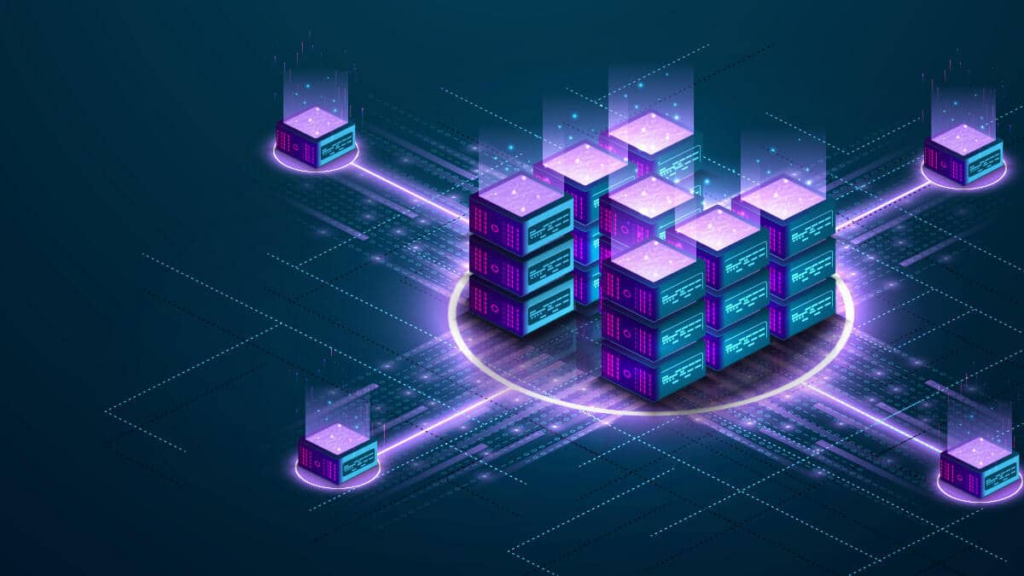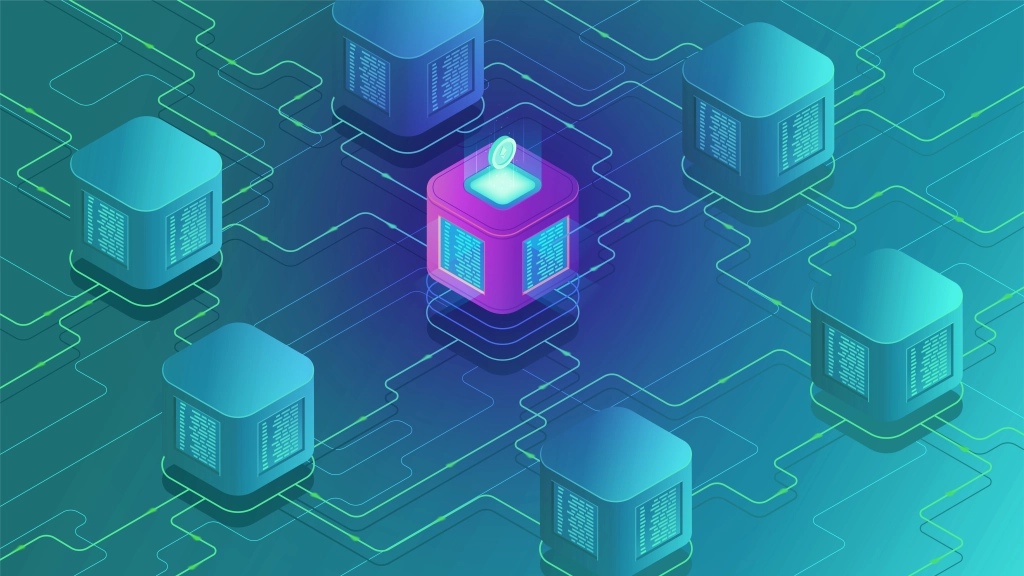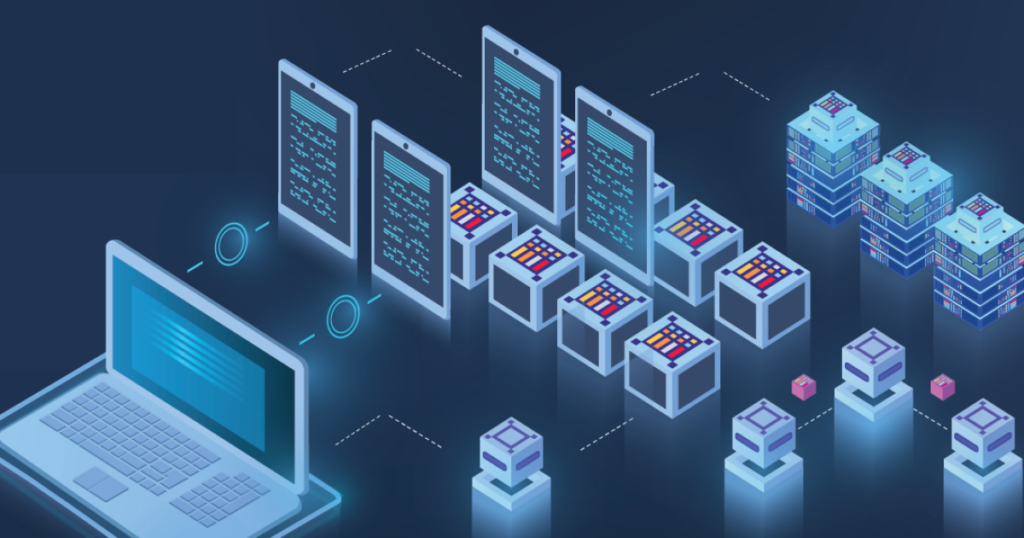Blockchain is a shared, immutable ledger that facilitates the process of recording transactions and tracking assets in a business network. An asset can be tangible (a house, car, cash, land) or intangible (intellectual property, patents, copyrights, branding). Virtually anything of value can be tracked and traded on a blockchain network, reducing risk and cutting costs for all involved. Beinsure Media has collected the opinions of blockchain experts and presents an overview of the main key elements of the blockchain technology.
The blockchain market is likely to grow from $5 bn in 2022 to $24 bn in 2025 at a CAGR of 46%.
Blockchain continues to be a hot topic in the business world and news. Many people have heard of blockchain but may not be familiar with what it actually is.
As a basic definition, blockchain is a data structure that enables the creation of a digital ledger of transactions and the ability to share them among a distributed network of computers.
Blockchain is ideal for delivering that information because it provides immediate, shared and completely transparent information stored on an immutable ledger that can be accessed only by permissioned network members.
A blockchain network can track orders, payments, accounts, production and much more. And because members share a single view of the truth, you can see all details of a transaction end to end, giving you greater confidence, as well as new efficiencies and opportunities.
Blockchain is one of the trending technologies in the world, with the highest number of social media mentions. Due to various use cases in the Supply chain, Payments, Digital Assets (Cryptocurrencies), Non-Fungible Tokens (NFT), and Smart Contracts, Blockchain registered massive growth in the past few years.
Key Takeaways

- Blockchain is a type of shared database that differs from a typical database in the way that it stores information; blockchains store data in blocks that are then linked together via cryptography.
- As new data comes in, it is entered into a fresh block. Once the block is filled with data, it is chained onto the previous block, which makes the data chained together in chronological order.
- Different types of information can be stored on a blockchain, but the most common use so far has been as a ledger for transactions.
- In Bitcoin’s case, blockchain is used in a decentralized way so that no single person or group has control—rather, all users collectively retain control.
- Decentralized blockchains are immutable, which means that the data entered is irreversible. For Bitcoin, this means that transactions are permanently recorded and viewable to anyone.
A blockchain is a distributed database or ledger that is shared among the nodes of a computer network. As a database, a blockchain stores information electronically in digital format. Blockchains are best known for their crucial role in cryptocurrency systems, such as Bitcoin, for maintaining a secure and decentralized record of transactions. The innovation with a blockchain is that it guarantees the fidelity and security of a record of data and generates trust without the need for a trusted third party.
One key difference between a typical database and a blockchain is how the data is structured. A blockchain collects information together in groups, known as blocks, that hold sets of information.
Blocks have certain storage capacities and, when filled, are closed and linked to the previously filled block, forming a chain of data known as the blockchain. All new information that follows that freshly added block is compiled into a newly formed block that will then also be added to the chain once filled.
A database usually structures its data into tables, whereas a blockchain, as its name implies, structures its data into chunks (blocks) that are strung together. This data structure inherently makes an irreversible timeline of data when implemented in a decentralized nature. When a block is filled, it is set in stone and becomes a part of this timeline. Each block in the chain is given an exact timestamp when it is added to the chain.
First proposed as a research project in 1991, the blockchain concept predated its first widespread application in use: Bitcoin, in 2009. In the years since, the use of blockchains has exploded via the creation of various cryptocurrencies, decentralized finance (DeFi) applications, non-fungible tokens (NFTs), and smart contracts.
According to PWC, almost 90% of financial services firms globally, especially the more traditional ones, fear FinTech challengers will chip away at their revenues.
Key elements of a blockchain

1. Distributed ledger technology
All network participants have access to the distributed ledger and its immutable record of transactions. With this shared ledger, transactions are recorded only once, eliminating the duplication of effort that’s typical of traditional business networks.
2. Immutable records
No participant can change or tamper with a transaction after it’s been recorded to the shared ledger. If a transaction record includes an error, a new transaction must be added to reverse the error, and both transactions are then visible.
3. Smart contracts
To speed transactions, a set of rules — called a smart contract — is stored on the blockchain and executed automatically. A smart contract can define conditions for corporate bond transfers, include terms for travel insurance to be paid and much more.
How blockchain works?

As each transaction occurs, it is recorded as a “block” of data
Those transactions show the movement of an asset that can be tangible (a product) or intangible (intellectual). The data block can record the information of your choice: who, what, when, where, how much and even the condition — such as the temperature of a food shipment.
Each block is connected to the ones before and after it
These blocks form a chain of data as an asset moves from place to place or ownership changes hands. The blocks confirm the exact time and sequence of transactions, and the blocks link securely together to prevent any block from being altered or a block being inserted between two existing blocks.
Transactions are blocked together in an irreversible chain: a blockchain
Each additional block strengthens the verification of the previous block and hence the entire blockchain. This renders the blockchain tamper-evident, delivering the key strength of immutability. This removes the possibility of tampering by a malicious actor — and builds a ledger of transactions you and other network members can trust.
Blockchain, sometimes referred to as Distributed Ledger Technology (DLT), makes the history of any digital asset unalterable and transparent through the use of decentralization and cryptographic hashing.
The goal of blockchain is to allow digital information to be recorded and distributed, but not edited. In this way, a blockchain is the foundation for immutable ledgers, or records of transactions that cannot be altered, deleted, or destroyed.
- A blockchain is a database that stores encrypted blocks of data then chains them together to form a chronological single-source-of-truth for the data
- Digital assets are distributed instead of copied or transferred, creating an immutable record of an asset
- The asset is decentralized, allowing full real-time access and transparency to the public
- A transparent ledger of changes preserves integrity of the document, which creates trust in the asset.
- Blockchain’s inherent security measures and public ledger make it a prime technology for almost every single sector
This is why blockchains are also known as a distributed ledger technology (DLT).
Who Uses Blockchain?
Organizations with large amounts of stored records that need information to be moved and shared can benefit from using blockchain, which can include insurance companies, banks, hospitals and even governments.
It is important to understand that there is not just one blockchain in the world.
There are different types of blockchains in use globally, with many types of blockchain initiatives in development.
- Open or public blockchain: used for governments or nonprofit organizations, where information is open to the public.
- Closed or private blockchain: allows only invited users to participate, see and use the information. This would be of interest to insurance companies to use and share information on insurance policies for administration, billing and claims payments. Only information that is needed to be shared is shared.
How Blockchain Transforms Insurance?

According to Beinsure Research, smart contracts for digital insurers are getting a lot of attention these days. As part of the digital transformation revolution, they offer a faster, safer, and less expensive way to provide cover than legacy system offerings (see Insurers` Digital Strategies).
What is a smart contract in insurance?
A smart contract is a blockchain-based insurance contract that pays out when certain, predefined conditions have been met. Having evolved over the past decade, today, smart contracts are transparent and data-driven and are therefore comparable to parametric insurance contracts (see How Blockchain Helps E-commers?).
Cheaper than traditional contracts, they are third-party free, which lowers administrative costs as well as premiums (see How Blockchain Can Help the Insurance Industry?).
Just like traditional contracts, smart contracts set out strict parameters between two parties. However, unlike traditional contracts, smart contracts track insurance claims and hold both parties accountable.
As the rate of cybercrime increases, in direct correlation with vast data gathering by corporate entities with the IoT, the urgency to secure information has increased massively – because when serious breaches happen, they cost a fortune to fix.
For example, the Indiana-based Anthem Insurance suffered a data breach in 2015 that was so serious, it exposed the sensitive medical data of 80 million of its customers.
The insurer was forced to pay US$39mn in compensation to several State Attorney Generals following just one lawsuit resulting from the breach. The data was leached from Anthem Inc over several months, with the company eventually settling all lawsuits in 2017. The breach cost them a hefty US$115mn.
Back then, blockchain contracts were not the norm; now, smart contracts can provide a safer environment in which to store sensitive information and data on customers and their policies.
Although not completely fortified against breaches (no system can ever be considered 100% crime-proof), blockchain is currently the most secure method in which information can be stored (see Agility Time for Blockchain in Insurance).
Generally, blockchain ledgers can’t be manipulated or corrupted: they are encrypted and the data is timestamped, transparently providing a tracked record of actions. The transparency also provides evidence of potential tampering, should attempts arise.
……………………………
Edited by Oleg Parashchak – CEO Finance Media & Editor-in-Chief at Beinsure Media








